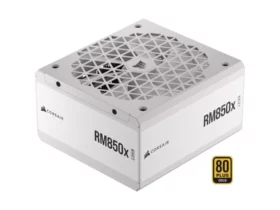How to automatically monitor the temperature and humidity of the servers? Let’s find out together in this article
In the context of the transmission of telematic data, there is no doubt how important is the role of the computers defined as Servers, or those devices that deal with providing any type of service – hence their name – to other devices that are, conversely, called Client. Without going into too much technical details, it is easy to imagine how much the user experience can be affected if, for any reason, made a request to a server, they do not get any response for reasons related to the malfunction of the same.
It is therefore essential to take care of every possible cause of failure and to keep these “special” devices in optimal conditions; in particular, temperature monitoring is crucial. It is well known, moreover, how the right thermal conditions are essential for the correct functioning of the most different devices: just think of the use of fans in most computers. This attention must be especially taken care of for the server part.
The ideal temperatures for servers
The AHSRAE (American Society of Heating, Refrigerating and Air-Conditioning Engineers) is one of the most authoritative companies in the field of heating, cooling and air conditioning systems and constantly updates its guidelines, the latest of which – for the field we are dealing with – date back to 2016 (https://tc0909.ashraetcs.org/documents/ASHRAE_TC0909.pdf): ideal temperatures are between 18 and 24 degrees centigrade and, in any case, should never exceed the 10 ° range C – 28 ° C, while the humidity should settle between 40% and 60% rH. Maintaining these thermal conditions involves at least two beneficial effects: first of all, as stated, it guarantees the correct functioning of the devices and, in addition, it allows to safeguard energy resources while respecting an environment that seems to be increasingly fragile.
Automated monitoring
By virtue of the foregoing, therefore, it would be ideal to be able to take advantage of an automated monitoring system that alerts you in case of criticality, so as to be able to operate instantly and avoid worst-case scenarios. The Valeprog software house has created a system that meets this need (https://valeprog.it/blog/monitoraggio-temperatura-server/). At the base there are three units of the famous Raspberry PI mini PC, two of them take care of thermal control, while the other is connected to an external monitor at the place where the servers are located, so as to provide the recorded data in real time and warn in case of problems: in this case, in fact, a red alert appears, in order to signal the need for intervention.
For all this to work it is necessary, as can easily be assumed, that the Raspberry are equipped with specific sensors for recording the parameters to be monitored, namely the temperature and humidity. It is then possible to modify the warnings that appear on the screen according to the type of server and to send an e-mail notification when the values should exceed those recommended. If this were not enough, you can also set the sending of an SMS to individual employees and / or groups, to report anomalies and be able to intervene even more promptly.
In this way the efficiency and stability of the server side is guaranteed for a smooth data transmission with the clients that connect.















Leave a Reply
View Comments